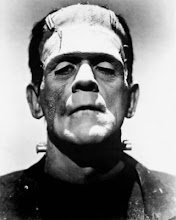"James Clerk Maxwell (13 June 1831 – 5 November 1879) was a Scottish[1] theoretical physicist and mathematician. His most important achievement was classical electromagnetic theory, synthesizing all previously unrelated observations, experiments and equations of electricity, magnetism and even optics into a consistent theory.[2] His set of equations—Maxwell's equations—demonstrated that electricity, magnetism and even light are all manifestations of the same phenomenon: the electromagnetic field. From that moment on, all other classic laws or equations of these disciplines became simplified cases of Maxwell's equations. Maxwell's work in electromagnetism has been called the "second great unification in physics",[3] after the first one carried out by Isaac Newton.
Maxwell demonstrated that electric and magnetic fields travel through space in the form of waves, and at the constant speed of light. Finally, in 1864 Maxwell wrote "A dynamical theory of the electromagnetic field", where he first proposed that light was in fact undulations in the same medium that is the cause of electric and magnetic phenomena.[4] His work in producing a unified model of electromagnetism is considered to be one of the greatest advances in physics."
(http://en.wikipedia.org/wiki/James_Clerk_Maxwell)"
Michael Faraday, FRS (22 September 1791 – 25 August 1867) was an English chemist and physicist (or natural philosopher, in the terminology of the time) who contributed to the fields of electromagnetism and electrochemistry.
Faraday studied the magnetic field around a conductor carrying a DC electric current, and established the basis for the electromagnetic field concept in physics. He discovered electromagnetic induction, diamagnetism, and laws of electrolysis. He established that magnetism could affect rays of light and that there was an underlying relationship between the two phenomena.[1][2] His inventions of electromagnetic rotary devices formed the foundation of electric motor technology, and it was largely due to his efforts that electricity became viable for use in technology."
http://en.wikipedia.org/wiki/Michael_Faraday)Since Mary Shelley used the very believable idea of electricity to give birth to Frankenstein's creation, the new impact of electricity and electromagnetic fields is very fitting as an influence for the book.
-Michael

No comments:
Post a Comment